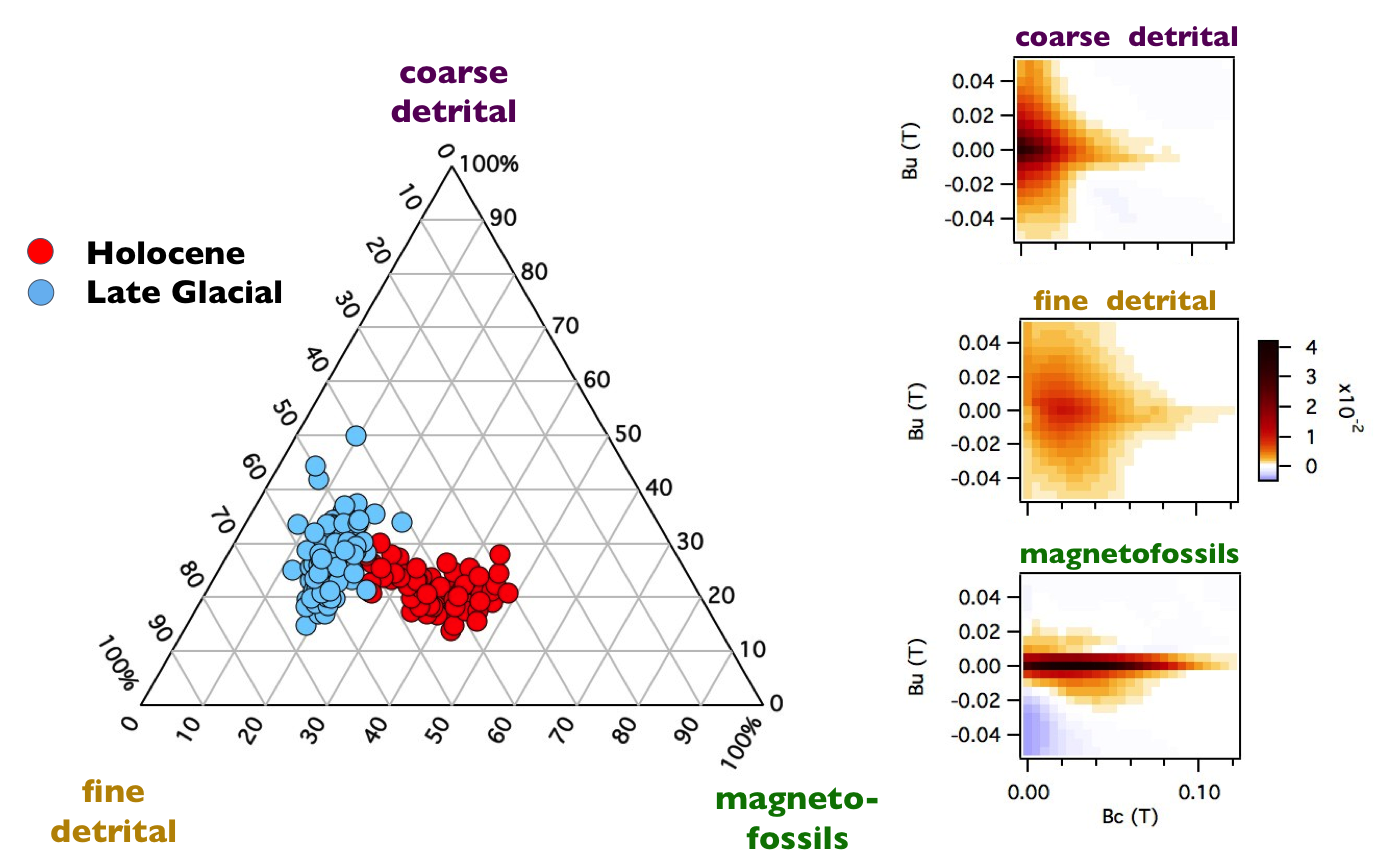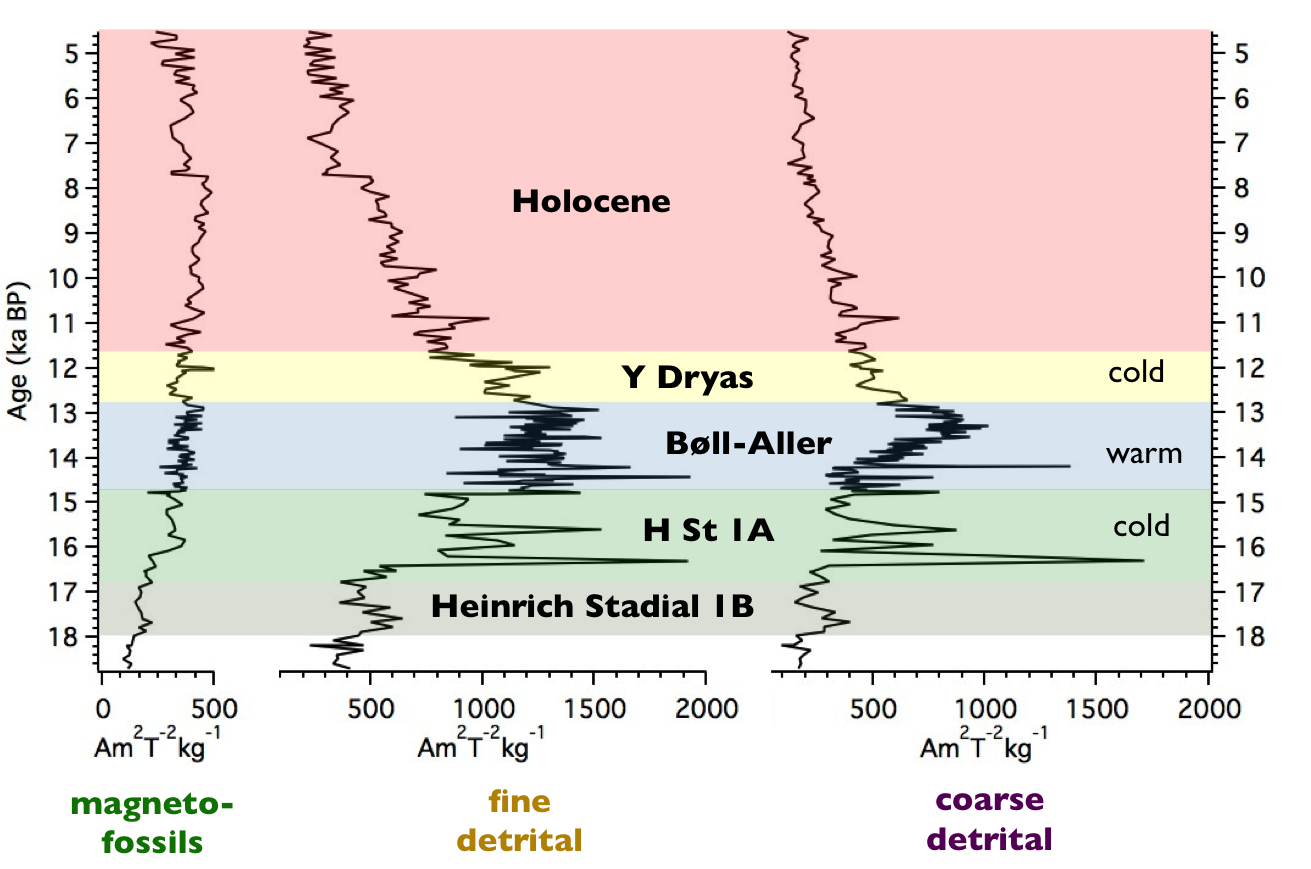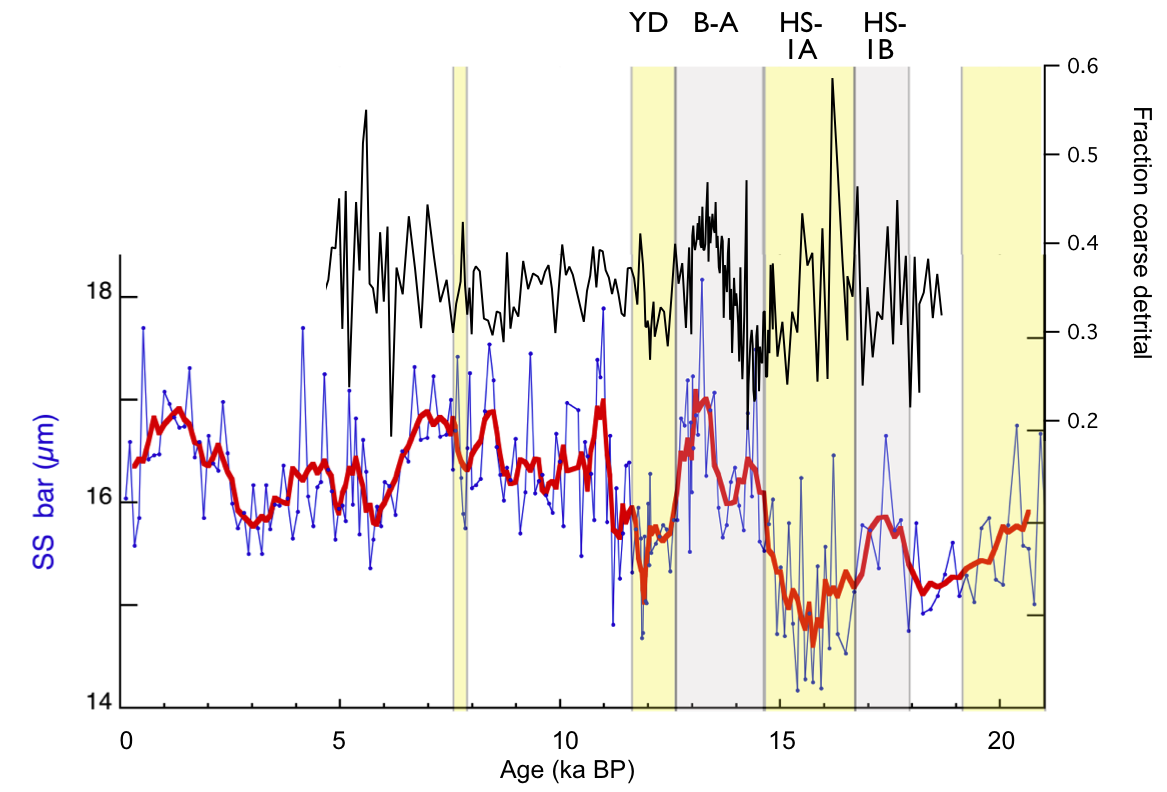FORC-PCA put to use for the first time
We are happy to report that our first-order reversal curve (FORC) unmixing method (FORCem, Lascu et al., 2015) has been successfully applied to a sedimentary sequence from Rockall Trough in order to shed light on sediment dynamics in the North Atlantic during the last glacial-interglacial transition (Termination I). We report our findings in the paper by Channell et al. published in the journal Geochemistry, Geophysics, Geosystems . The motivation behind the study was to glean insight into ocean circulation during the deglaciation, which is critical for understanding carbon cycling and associated climatic shifts during the last glacial-interglacial transition. Geochemical ocean circulation proxies are powerful, but combine the effects of water mass advection with those of biogeochemical cycling. We tackle the problem by employing sedimentological proxies, which are controlled by the physics of water mass flow. To this effect we have combined the use of an established proxy, sortable silt, with a magnetic proxy we are developing that is based on unmixing FORC diagrams. The sortable silt method (McCave et al., 1995) has been very successful, but involves a laborious sample preparation protocol. FORCs on the other hand are easy to measure, following a fully automated protocol. FORC diagrams can then be unmixed using principal component analysis (the so-called FORC-PCA method). Within the Rockall Trough sediments we have identified three magnetic end members (EMs): a coarse (>10 μm) detrital component, a fine (1-10 μm) detrital component, and a biogenic component consisting of magnetofossils from magnetotactic bacteria (30-100 nm).
The absolute concentration of the detrital components increases during the Late Glacial, followed by a decrease concomitant with the onset of the Holocene. Elevated concentrations of coarse detrital particles during the Bølling-Allerød are consistent with enhanced bottom-current velocity from the mean grain size of sortable silt (see Fig. 9 in the paper). Peaks in detrital concentrations within Heinrich Stadial I (HS-I) coincide with increased concentrations of ice-rafted debris. The magnetosome concentration increases steadily throughout Termination I, and plateaus in the Holocene.
The change in observed bulk magnetic grain size, indicated by ratios such as χARM/χ, Mrs/Ms, or ARM/IRM, is explained entirely by the decreasing concentration of detrital magnetite, rather than a decrease in the average grain size of the magnetic ensemble, as the magnetosome signal is relatively constant over this period. Bulk grain size ratios fail to reflect the large variations in the absolute EM signals that are observed during the Late Glacial. FORC-PCA thus provides a more fundamental tracer of magnetic variations in these sediments than traditional grain size proxies. Bulk ratios can be entirely derived from the absolute EM signals identified by FORC-PCA, as seen from the excellent agreement between Mrs/Ms and the FORC-derived detrital fraction (Fig. 9c in the paper), and thus become superfluous once FORC-PCA analysis is performed.
FORC-PCA components reveal a more comprehensive picture of the magnetic variations that occur throughout the core, leading to an improved understanding of how magnetic parameter variations are linked with underlying geological processes. In our case the coarse detrital component is in principle equivalent to the silt fraction (excluding the very fine silts) transported by the bottom current, while the fine detrital component is equivalent to the cohesive fraction (clay and very fine silt) that may originate from continental shelf sources reactivated with sea-level rise. The decrease in total magnetic signal in the Holocene is associated with bottom water reorganization and shutdown of sediment sources.
A potentially promising outcome of the FORC-PCA method is the opportunity to calculate the ratio between the abundances of the two detrital components, which should be equivalent to the sortable silt (see figure above). This is advantageous because it represents an alternative means for discriminating the sortable silt fraction, bypassing the need for a complex sample preparation protocol. However, besides the bottom-current signal, the coarse detrital fraction (black curve above) may incorporate signatures from other sources, such as ice-rafted debris (peaks during HS-IA), or volcanic ashes. There is, therefore, a need to account for these additional sediment sources.
To try FORC-PCA for yourself, visit our FORCem page.




Leave a Reply